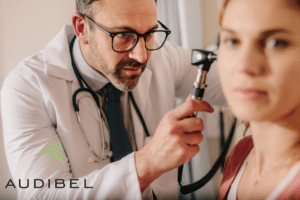Our pets bring us immeasurable joy and companionship, their presence brightening our lives in countless ways. As responsible pet owners, it is our duty to ensure their well-being and happiness in every aspect, including their auditory health. Just as hearing loss can greatly impact our own quality of life, it can also have a profound effect on our furry friends. In this blog post, we will delve into the importance of protecting our pets’ ears and provide valuable insights on how to maintain their auditory health.
Understanding the Anatomy of Pets’ Ears
Before we delve into the details, let’s take a moment to understand the unique anatomy of our pets’ ears. While there are some similarities to human ears, there are also key differences that must be taken into consideration. Dogs, for example, have a more pronounced shape of their ear canals, which makes them more prone to developing ear problems. Additionally, both dogs and cats have more sensitive hearing than humans, allowing them to hear a broader range of frequencies.
Common Ear Conditions in Pets
Pets can suffer from a variety of ear conditions that can impact their hearing. Some of the most common issues include ear infections, ear mites, and wax build-up. Ear infections, in particular, can cause pain, discomfort, and even hearing loss if left untreated. It is important to keep a vigilant eye on any signs of ear problems in our pets and address them promptly.
Recognizing signs of hearing loss in pets
Hearing loss in pets can manifest in different ways, and it’s essential for pet owners to be aware of the signs. One of the most apparent indications is a noticeable change in behavior. If your pet becomes less responsive to calls, seems disoriented, or becomes easily startled, it could be a sign of hearing loss. Physical signs, such as excessive scratching or redness in the ears, should also raise concerns and prompt a visit to the veterinarian.
Preventive Measures for Maintaining Pets’ Auditory Health
Taking preventive measures is key to maintaining our pets’ auditory health. Regular ear cleaning and inspection are vital in preventing ear infections and other issues. Use a veterinarian-recommended ear cleaning solution and gently cleanse your pet’s ears, being careful not to push any debris further into the ear canal. Avoid exposing your pets to loud noises, as excessive noise can damage their sensitive ears. Additionally, a balanced diet that includes essential nutrients can support overall ear health in our furry companions.
The Role of Regular Veterinary Check-ups in Preserving Pets’ Hearing
Regular veterinary check-ups play a crucial role in preserving our pets’ hearing. Professionals can perform thorough ear examinations to detect any early signs of problems and address them before they worsen. In the case of ear infections or other ear-related issues, prompt treatment is necessary to prevent hearing loss from occurring.
Hearing Aids for Pets
Just like humans, pets can benefit from the use of hearing aids. There are various types of hearing aids available specifically designed for pets, including in-ear and behind-the-ear models. These devices can amplify sounds and help pets regain their ability to hear, significantly improving their quality of life.
Benefits and Considerations of Using Hearing Aids for Pets
Using hearing aids for pets can bring about numerous benefits. They can enhance their communication abilities, allowing them to respond to commands, interact more effectively, and regain a sense of connection with their surroundings. It is important to consider the specific needs and comfort of each individual pet when selecting a hearing aid option, and consulting with a veterinarian is highly recommended.
Tips for Acclimating Pets to Hearing Aids
As with any new device or change, it may take some time for pets to adjust to wearing hearing aids. The key is to introduce them gradually and positively reinforce the experience. Start by allowing your pet to become familiar with the hearing aid’s presence, rewarding them with treats and praise. Gradually increase the duration of wear over time, using training techniques that help them associate wearing the device with positive experiences. It may take some patience and consistency, but the potential benefits for your pet’s auditory well-being are well worth the effort.
Our pets bring immeasurable joy into our lives, and it is our responsibility to protect their well-being in every way we can. By paying attention to their auditory health, recognizing signs of hearing loss, and taking preventive measures, we can help our furry friends maintain their ability to hear and engage with the world around them. Regular veterinary check-ups, the use of hearing aids when necessary, and patience in acclimating our pets to these devices can make a significant difference in their quality of life. Let us all take proactive measures to safeguard our beloved pets’ ears, ensuring they continue to experience the love and joy they bring to our lives for years to come.


